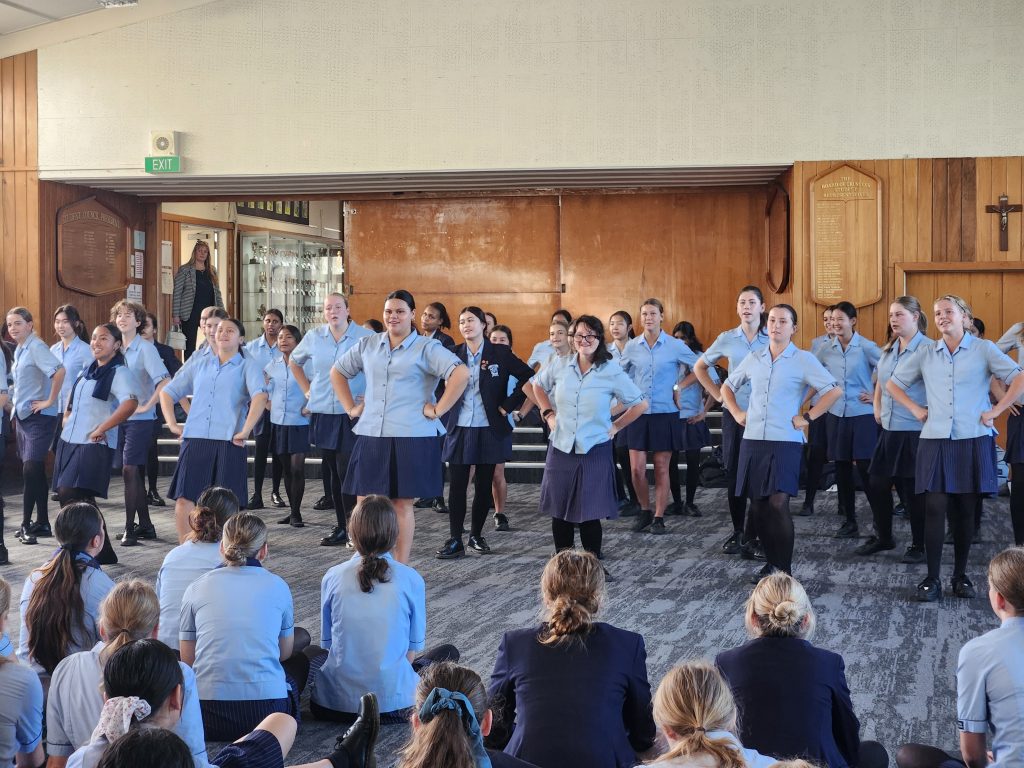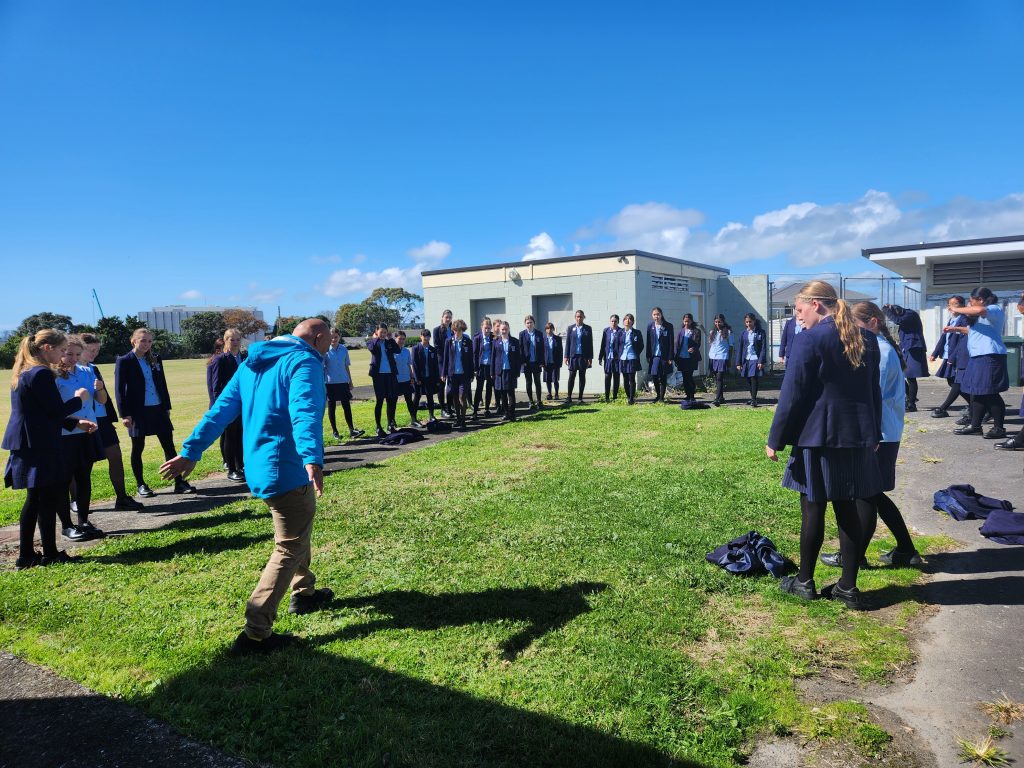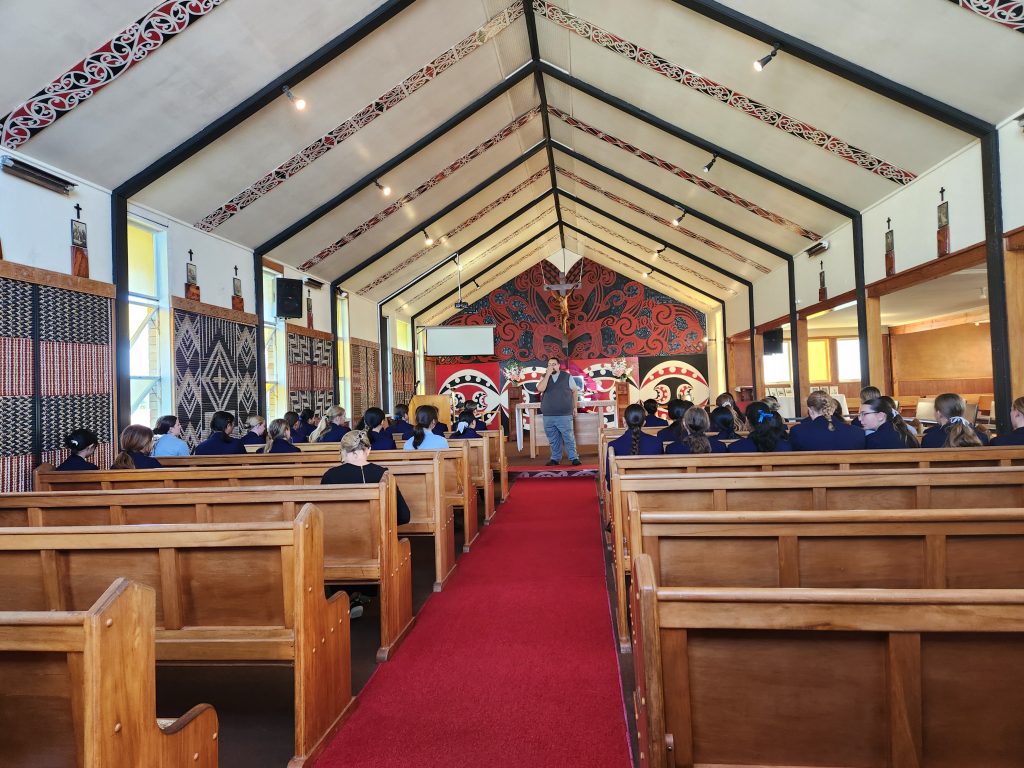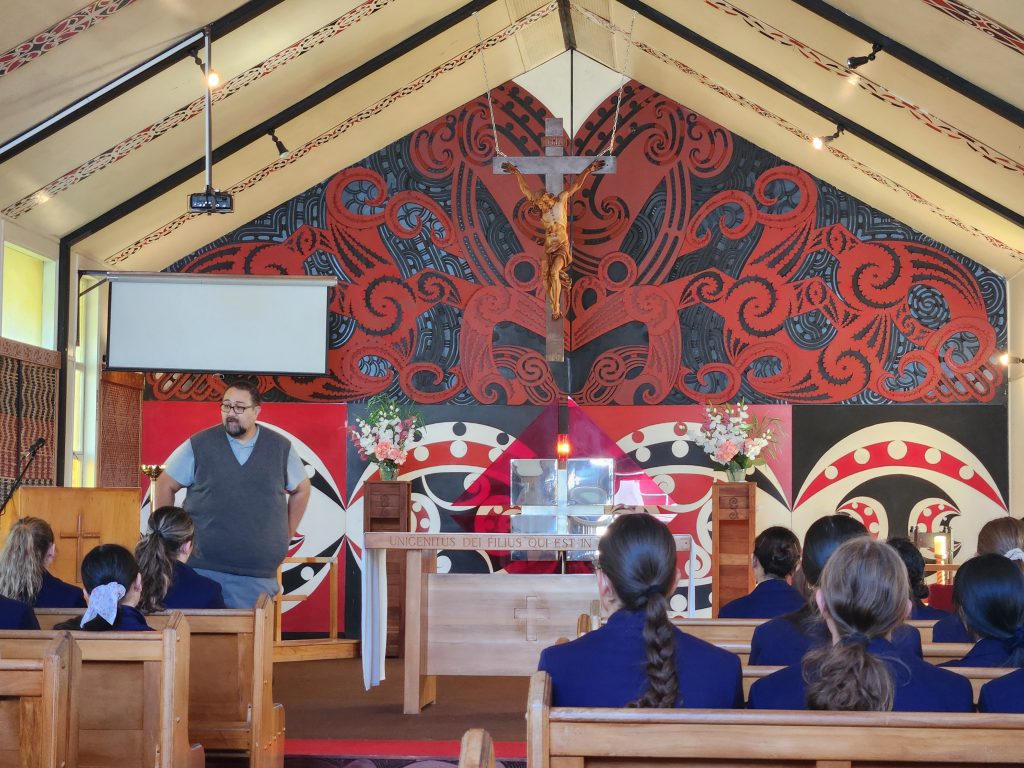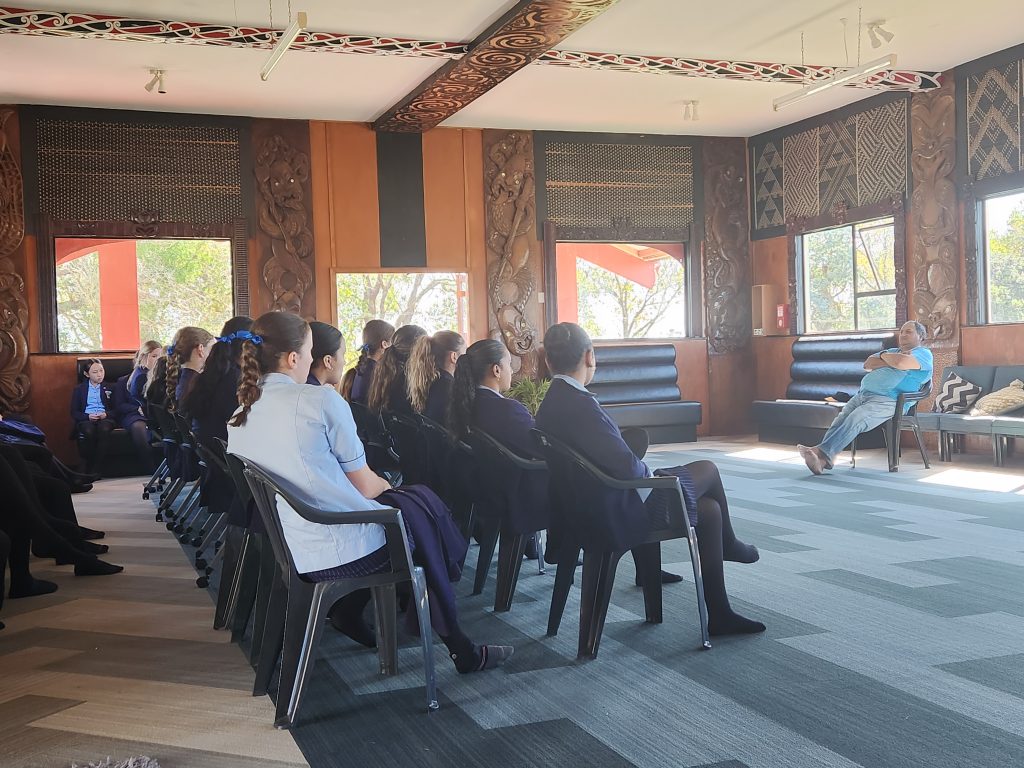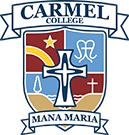On Tuesday 9 April our Year 11 students embarked on a cross-curricular trip to Te Kamaka Marae at Hāto Petera, immersing themselves in Māori spirituality, history and cultural practices. This enriching experience encompassed Religious Education, Health and Te Reo Māori, providing a holistic understanding of Te Ao Māori (the Māori worldview).
Students were welcomed with a traditional Powhiri and were represented by our Te Reo Māori students. This served as a powerful reminder of tikanga (protocols) and respect for the mana (prestige) of both the Marae and its people.
Throughout the visit, we gained valuable knowledge about Māori spirituality. We learned about the interconnectedness of all things in the natural world and the importance of whanaungatanga (relationships) within the community.
The trip also delved into the rich history of Te Kamaka Marae and Hāto Petera itself. Its place in the history of the Catholic Church in Aotearoa is both important and interesting. Students gained insights into the significance of the Marae as a place of gathering, ceremony and cultural expression. The context resonated with lessons learned in Health classes about cultural identity and wellbeing.
The visit provided a unique platform to practice Te Reo Māori in a real-world setting. Students had the opportunity to interact with Te Kamaka Marae representatives and participate in cultural activities, all while strengthening their grasp of the language. This practical application undoubtedly solidified classroom learning and offered a deeper connection to Te Ao Māori.
Learning about the Carmel College haka was another highlight of the trip. The haka is a powerful performance that embodies strength, unity and pride. By studying the haka, students gained a deeper understanding of Māori culture and traditions, enriching their knowledge base across all three participating subjects.
The visit to Te Kamaka Marae proved to be a valuable learning experience for Year 11 students. By exploring Māori spirituality, history and cultural practices, they gained a broader perspective on Te Ao Māori and fostering mutual respect.
